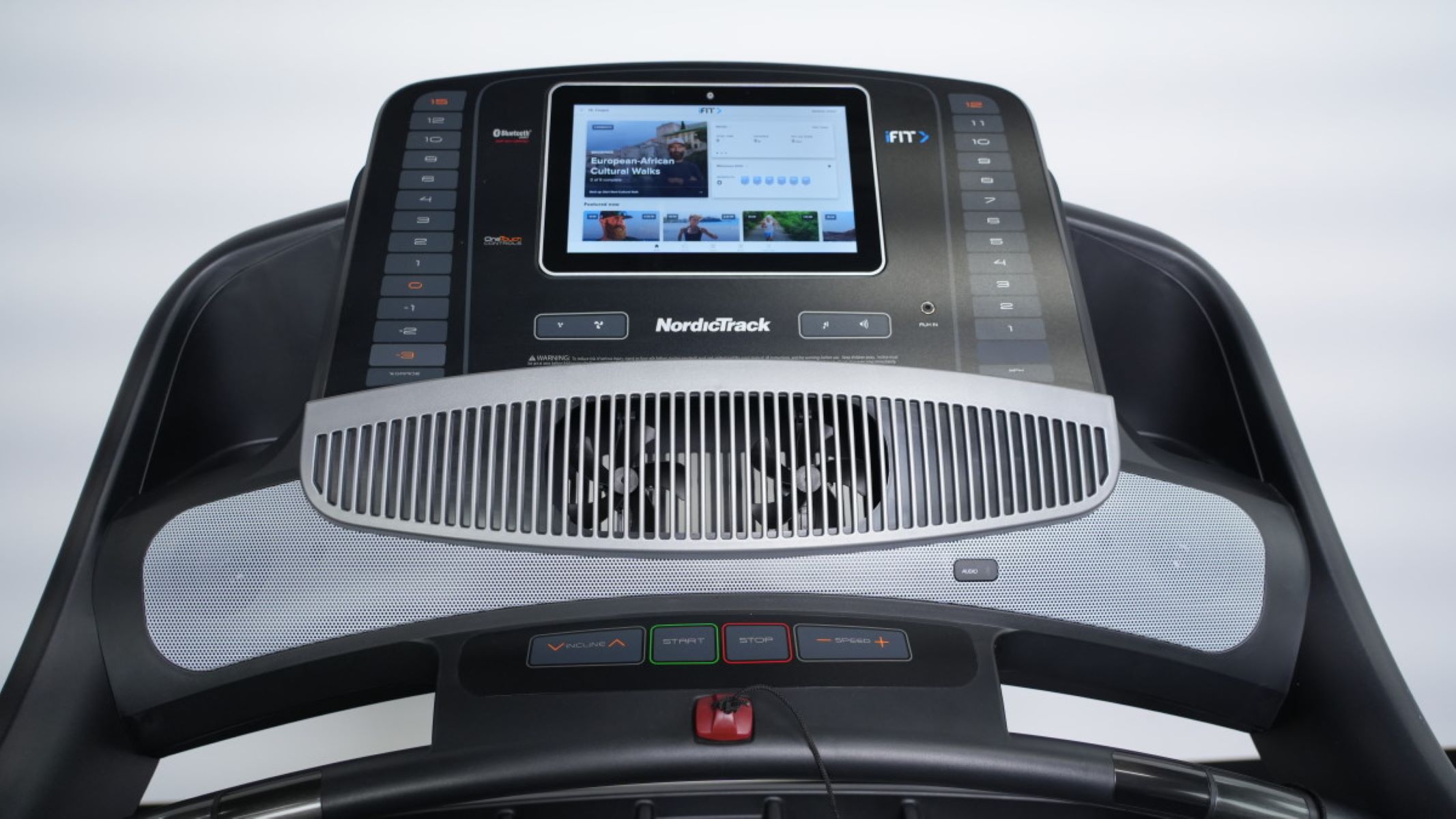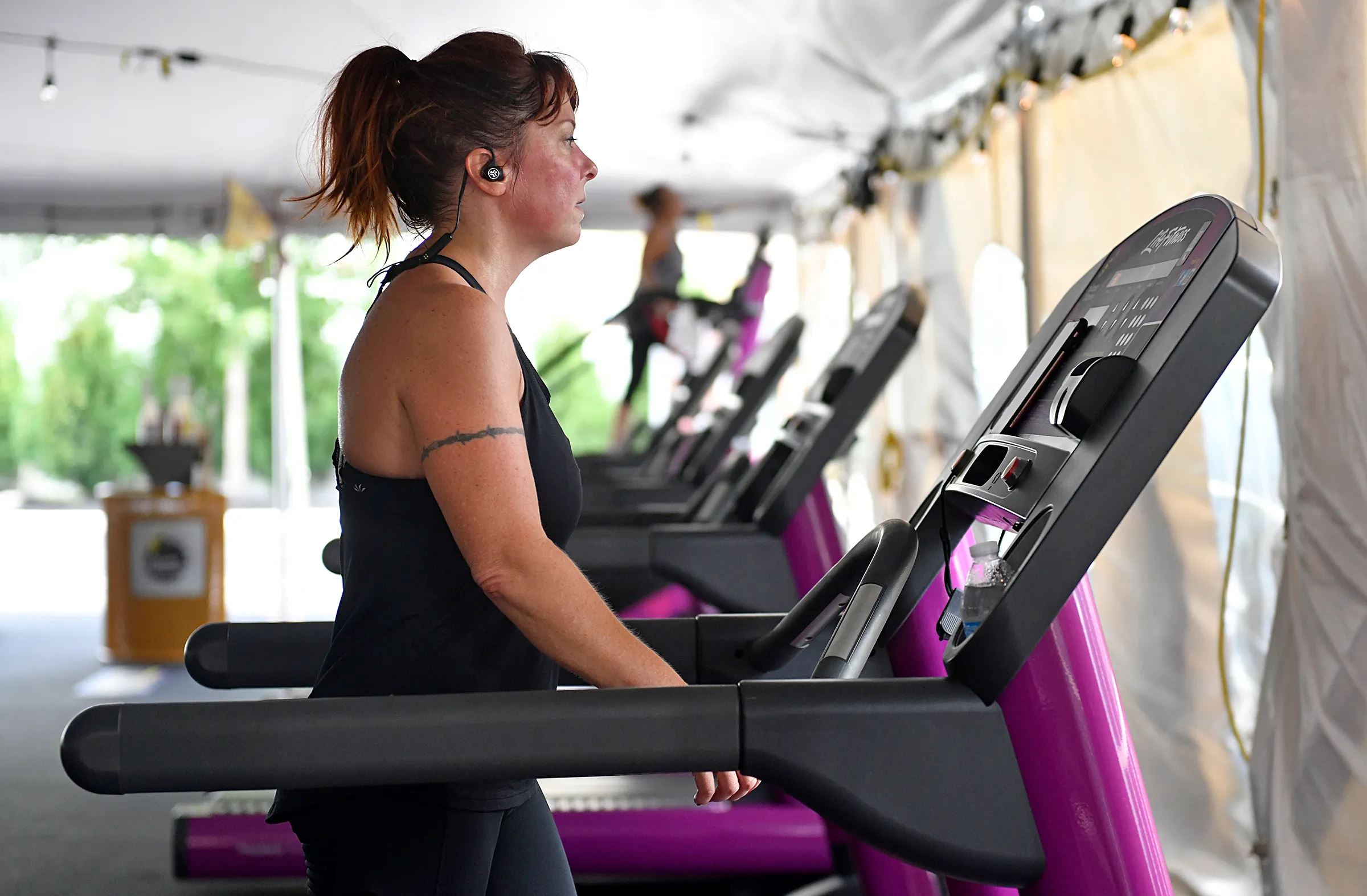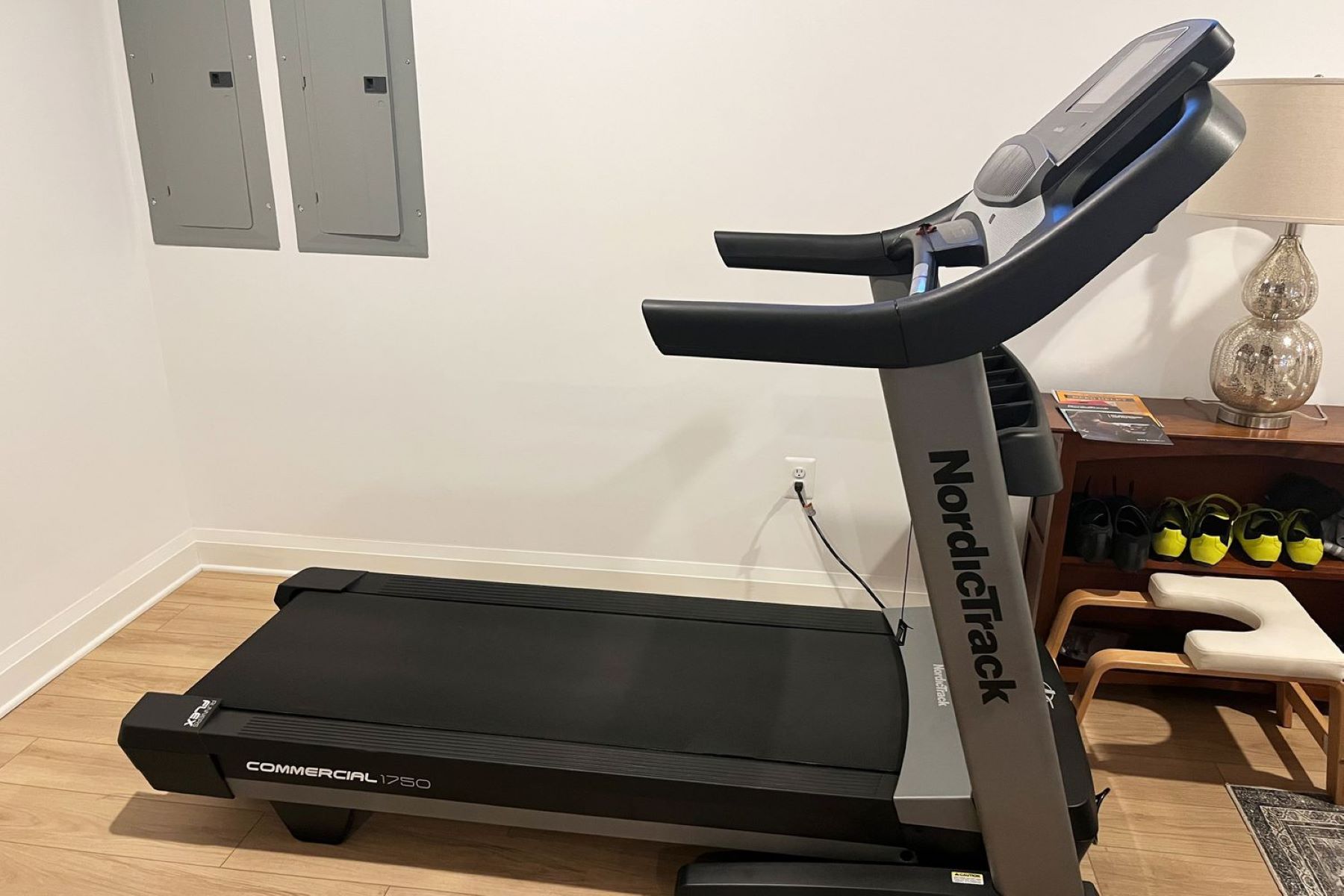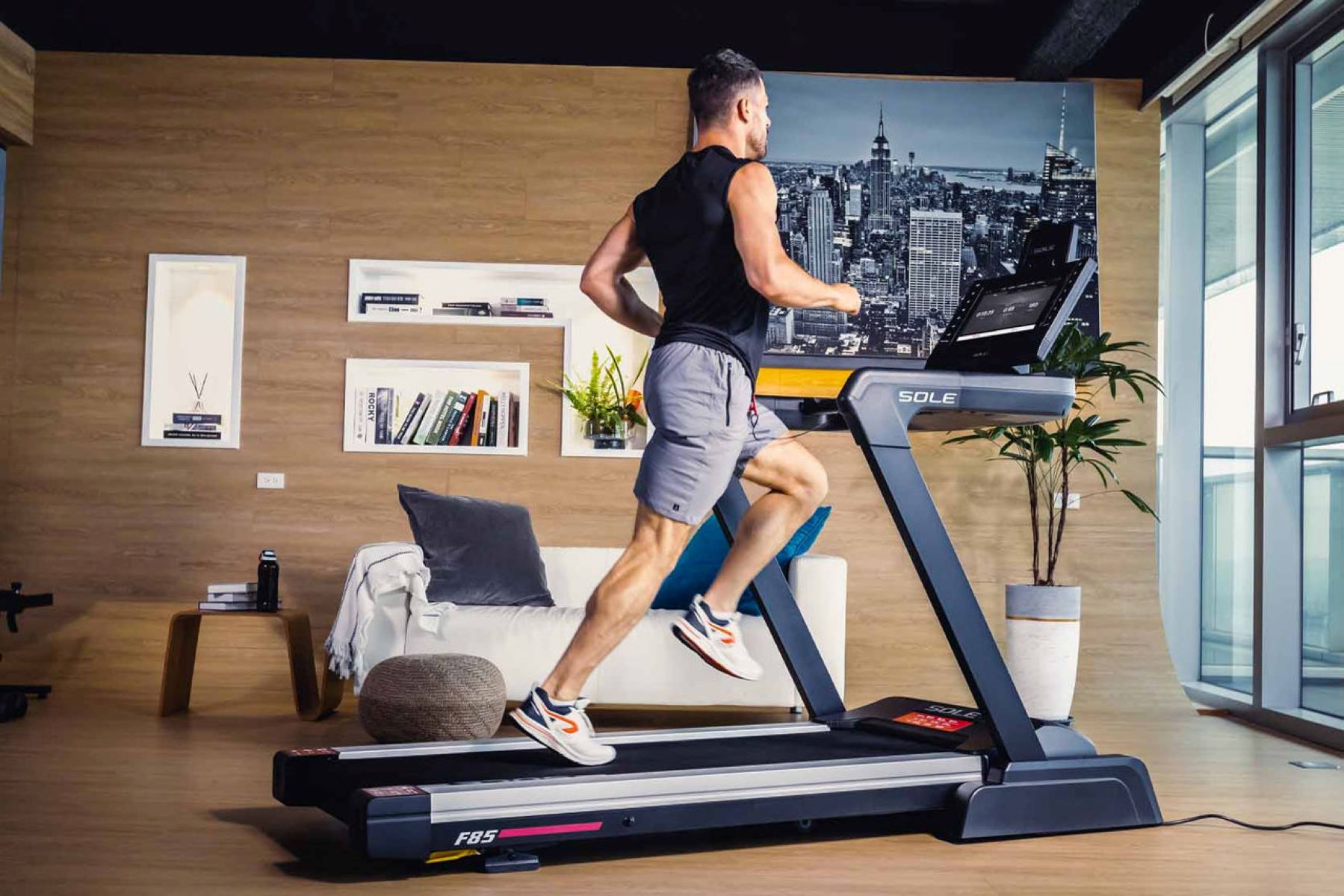

Featured
How To Check Distance Running
Modified: August 19, 2023
Discover how to check your distance while running with our featured guide. Learn the best techniques and tools to track your running progress efficiently.
Introduction
Running is a popular form of exercise that provides numerous benefits, including improved cardiovascular health, stress reduction, and increased endurance. Whether you’re a seasoned runner or just starting out, accurately tracking your distance while running is crucial to monitor your progress, set goals, and optimize your training. Knowing how far you’ve run can help you stay motivated and ensure you’re pushing yourself to achieve your desired results.
Tracking your distance while running is not only important for personal satisfaction, but it also plays a significant role in preventing injuries and avoiding overtraining. By monitoring your distance, you can gradually increase your mileage, allowing your body to adapt and reduce the risk of strain or fatigue. Moreover, accurately tracking your distance can help you plan your routes more efficiently and make adjustments based on your fitness level and goals.
In this article, we will explore various methods for checking distance while running. From using modern technology such as GPS watches and smartphone apps to more traditional methods like pedometers and route marking, we will cover a range of options that cater to different preferences and budgets. Whether you prefer high-tech gadgets or keeping it simple, there’s a method that will suit your needs.
No matter if you’re training for a marathon, trying to improve your personal best, or just enjoying a leisurely jog, knowing your distance is key to monitoring and improving your performance. So, let’s dive into the different methods available and find the one that works best for you!
Importance of Checking Distance While Running
Checking the distance while running is more than just a matter of curiosity. It holds significant importance in helping you become a more efficient and effective runner. Let’s explore some key reasons why monitoring your running distance is crucial:
1. Goal Setting and Progress Tracking: Tracking your distance allows you to set realistic goals and monitor your progress. By having a clear understanding of your current distance and gradually increasing it, you can challenge yourself and continuously strive for improvement. This not only keeps you motivated but also provides a sense of accomplishment as you reach and surpass your milestones.
2. Training Optimization: Monitoring your running distance helps optimize your training routine. You can structure your workouts based on the distance you want to cover, incorporating proper warm-ups, cooling down, and intervals. It enables you to design specific training plans that target different aspects of your running, such as speed, endurance, or hill training.
3. Injury Prevention: Overtraining and sudden increases in distance can lead to injury. By tracking your distance, you can ensure gradual progression, allowing your body to adapt and reduce the risk of strains and overuse injuries. It also helps in identifying patterns or correlations between certain distances and potential pain points, enabling you to address them proactively.
4. Route Planning: When you know the distance of your usual running routes, you can plan your runs more efficiently. It helps you estimate the time required and adjust your schedule accordingly. Additionally, you can explore new routes by mapping out distances in advance and discover exciting places to run while maintaining your desired distance.
5. Performance Evaluation: Consistently tracking your running distance allows you to assess your performance over time. You can analyze factors such as speed, pace, and energy expenditure, identifying areas where you can improve. It helps you evaluate the effectiveness of different training methods or adjustments in your running technique.
Overall, checking distance while running is an essential component of becoming a better runner. It empowers you to set goals, track progress, prevent injuries, plan routes, and evaluate your performance. Regardless of your running goals, understanding and monitoring your distance will undoubtedly enhance your overall running experience.
Basic Methods to Check Distance Running
There are several basic methods to check your distance while running, even without the use of advanced technology. These methods are simple, effective, and accessible to runners of all levels. Let’s explore some of these basic methods:
1. Using Landmarks: One of the simplest ways to estimate your running distance is by using landmarks. For example, if you know that a certain park or landmark is approximately one mile away, you can run to it and back to cover a two-mile distance. By familiarizing yourself with the distances between various landmarks in your running route, you can quickly estimate your total distance.
2. Counting Laps: If you’re running on a track or have access to a measured loop, counting laps can be an effective way to track your distance. Each lap is typically a predetermined distance, such as 400 meters or one-quarter mile, making it easy to calculate your total distance based on the number of laps you’ve completed.
3. Using Online Mapping Tools: Another method is to use online mapping tools that allow you to plot your running route and calculate the distance. Websites like Google Maps or MapMyRun provide mapping features where you can draw your route and obtain an accurate measurement of the distance covered. This method is particularly useful when planning new running routes or exploring unfamiliar areas.
4. Running Track: If you have access to a running track, you can utilize the marked lanes and use them to measure your distances. The standard distance of one lap around an outdoor track is 400 meters. By counting the number of laps you complete, you can accurately determine your total distance.
5. Measuring Time and Pace: By measuring your running time and pace, you can estimate your distance. For example, if you know that you run at an average pace of 8 minutes per mile, you can simply multiply your running time by your pace to calculate the distance. Keep in mind that this method provides an estimate rather than an exact measurement.
While these basic methods may not provide the same accuracy as advanced technologies, they are valuable tools for checking your distance while running. They are ideal for those who prefer simplicity or do not have access to specialized devices. Whether you’re running in a familiar neighborhood or exploring a new location, these methods can help you track and monitor your distance effectively.
Using GPS Watches or Fitness Trackers
GPS watches and fitness trackers have revolutionized the way we track our distance while running. These devices utilize Global Positioning System (GPS) technology to provide accurate and real-time data on your running distance, pace, speed, and other performance metrics. Let’s delve into the benefits and features of using GPS watches or fitness trackers:
1. Accurate Distance Tracking: GPS watches and fitness trackers use satellite signals to precisely calculate the distance covered during your run. This technology eliminates the need for manual measurements or estimations, providing you with reliable and accurate data. It allows you to keep a detailed record of your distances, making it easier to set goals and monitor progress.
2. Real-Time Feedback and Metrics: These devices offer real-time feedback on your running performance. You can instantly view your pace, speed, distance, and other important metrics right on your wrist. This feedback enables you to make adjustments during your run, ensuring that you maintain your desired pace or push yourself to reach new goals.
3. Data Analysis and Tracking: GPS watches and fitness trackers often come with companion apps or software that allow you to analyze and track your running data over time. You can view your historical performance, set personal bests, and identify trends in your running performance. This data-driven approach provides valuable insights and helps you make informed decisions about your training.
4. Route Planning and Exploration: With the GPS feature, you can plan and explore new running routes with ease. These devices can track your location and guide you along pre-determined routes or help you navigate uncharted territory. This feature is particularly useful for runners who enjoy exploring different areas or want to vary their regular running routes.
5. Training Tools and Features: GPS watches and fitness trackers often include additional training tools and features to enhance your running experience. These may include interval timers, heart rate monitors, cadence tracking, and even virtual coaching. These tools can help you optimize your training, improve your efficiency, and reach your fitness goals more effectively.
Whether you’re a casual runner or a serious athlete, using a GPS watch or fitness tracker can significantly enhance your running experience. The accurate distance tracking, real-time feedback, data analysis, and training tools provided by these devices offer valuable insights and help you take your running to the next level. Investing in a GPS watch or fitness tracker can provide you with the motivation, guidance, and performance tracking necessary for achieving your running goals.
Smartphone Apps for Distance Tracking
In addition to GPS watches and fitness trackers, smartphone apps have become increasingly popular as tools for tracking distance while running. These apps utilize the built-in GPS capabilities of smartphones to provide accurate distance measurements and a range of additional features. Let’s explore the benefits and features of using smartphone apps for distance tracking:
1. Convenience and Accessibility: Smartphone apps make distance tracking incredibly convenient since most people carry their phones with them while running. You can simply download a running app, open it, and start tracking your distance without the need for any additional devices or accessories.
2. Accuracy and Reliability: Many smartphone apps use GPS technology to provide accurate and reliable distance measurements. They leverage the same satellite signals as GPS watches and fitness trackers to calculate your running distance, ensuring that you have access to precise data for monitoring your progress.
3. Comprehensive Data and Metrics: Smartphone apps often offer a wide range of data and metrics beyond just distance. They can provide information on pace, speed, elevation, calories burned, and even heart rate (if your phone has the necessary sensors). This comprehensive data allows for a more thorough analysis of your running performance.
4. Integration with other Apps and Devices: Many running apps have integrations with other fitness apps, such as nutrition trackers or sleep monitors. This integration enables you to have a holistic view of your overall fitness and well-being, making it easier to identify the connections between your running distance and other aspects of your health.
5. Community and Social Features: Smartphone apps often include community and social features that allow you to connect with other runners. You can join virtual running groups, participate in challenges, and share your achievements with friends. These features can provide motivation, support, and a sense of camaraderie with fellow runners.
6. Customization and Personalization: Many running apps offer customization options to tailor your tracking experience to your specific preferences. You can set goals, create personalized training plans, and customize the display of data on your screen. This flexibility allows you to optimize the app to meet your individual needs and running style.
With the widespread availability of smartphones, taking advantage of a distance tracking app is a convenient and practical choice for many runners. The combination of accuracy, comprehensive data, integration with other apps and devices, community features, and customization options makes smartphone apps a powerful tool for tracking distance while running.
Pedometers and Step Counters
Pedometers and step counters are simple yet effective devices for tracking distance while running. They work by counting the number of steps taken during your run and converting it into distance measurements. Let’s explore the benefits and features of using pedometers and step counters:
1. Ease of Use: Pedometers and step counters are user-friendly devices that require minimal setup. They are typically worn on the waist or on the wrist and can be easily clipped or strapped onto your clothing. Once attached, they automatically start counting your steps, making them effortless to use.
2. Cost-Effective: Compared to GPS watches or fitness trackers, pedometers and step counters are often more affordable options for tracking distance. They provide a basic yet reliable method of measuring your running distance without the need for advanced technology or smartphone apps.
3. Simple and Accurate: Pedometers and step counters provide a straightforward measurement based on your steps taken. Most models use advanced motion sensors to accurately count each step, ensuring that the distance calculated is relatively accurate. While they may not provide the same level of precision as GPS-based devices, they are still adequate for many runners.
4. Battery Life: Pedometers and step counters have impressive battery life, often lasting for several months or even years without needing to be replaced. Their long-lasting batteries make them convenient devices that you can rely on for extended periods without worrying about frequent recharging or battery replacements.
5. Motivational Tool: Pedometers and step counters can serve as motivational tools for runners. Tracking the number of steps and distance covered can provide a sense of accomplishment and encourage you to increase your activity level. Setting step count goals or challenging yourself to beat your previous records can help you stay motivated and maintain an active lifestyle.
6. Everyday Use: One of the advantages of pedometers and step counters is their versatility. They can be used not only for running but also for everyday activities. Whether you’re walking, hiking, or even doing household chores, these devices can track your steps and provide valuable insights into your overall physical activity.
While pedometers and step counters may not offer the same level of advanced features and accuracy as other tracking devices, they are reliable tools for monitoring your running distance. Their simplicity of use, affordability, accuracy, long battery life, and versatility make them a popular choice for many runners looking for a basic way to keep track of their distance.
Marking Routes and Using Landmarks
Marking routes and using landmarks is a traditional yet effective method of checking distance while running. This method involves physically mapping out your routes and utilizing recognizable landmarks to estimate distances. Let’s explore the benefits and features of marking routes and using landmarks:
1. Familiarity and Convenience: Marking routes and using landmarks is convenient, especially if you frequently run in the same area. Once you’re familiar with the distances between landmarks, you can easily estimate the total distance covered during your run without the need for any additional devices or technology.
2. Flexibility in Route Selection: Marking your routes gives you the flexibility to choose different distances based on your fitness level or personal goals. For example, if you want to run a shorter or longer distance, you can adjust your route accordingly by incorporating or excluding certain landmarks.
3. Cost-Effective: This method requires no additional cost since it relies on your knowledge of the area and the use of recognizable landmarks. It is a budget-friendly option for those who prefer to keep their running routine simple and straightforward.
4. Connection to the Surrounding Environment: Marking routes and using landmarks allows you to develop a deeper connection to the surrounding environment. You become more aware of your surroundings, noticing the different landmarks, and appreciating the beauty of the area you’re running in.
5. Adjusting Routes On-The-Go: One of the advantages of this method is the ability to adjust your route on-the-go based on how you feel or unforeseen circumstances. If you encounter road closures, construction, or any other obstacles, you can easily adapt your route by using alternate landmarks as reference points.
6. Variety and Exploration: Marking routes and using landmarks can inspire you to explore new areas and discover different running routes. By identifying new landmarks or incorporating existing ones into your runs, you can add variety to your workouts and keep your running routine fresh and exciting.
Marking routes and using landmarks is a timeless and reliable method of checking distance while running. It provides a tangible connection to your environment and offers flexibility in route selection. Whether you’re running in familiar territory or exploring new areas, this method allows you to estimate your distance based on recognizable landmarks, making it a convenient and cost-effective option for many runners.
Calculating Distance Based on Time and Pace
Calculating distance based on time and pace is a reliable and straightforward method to estimate the distance covered during your run. By knowing your running speed or pace and the time you spent running, you can easily calculate the distance. Let’s explore the benefits and features of using this calculation method:
1. Simple and Easy Calculation: This method requires basic math skills and only two pieces of information: your running time and your pace or speed. By multiplying your running time by your pace, you can quickly calculate the estimated distance covered.
2. No Need for Additional Devices: Unlike GPS watches or pedometers, calculating distance based on time and pace does not require any additional devices or technology. It is a convenient option if you prefer to keep your running routine simple without relying on gadgets or apps.
3. Flexibility in Measuring Performance: With this method, you have the flexibility to measure your performance based on time, pace, or a combination of both. For example, if you’re training for a specific race or event, you can focus on achieving a target pace and monitor your progress accordingly.
4. Adjusting Distance Goals: By using the calculation of time and pace, you can adjust your distance goals according to your desired training intensity or fitness level. If you’re aiming for a longer distance, you can increase your running time while maintaining a steady pace. Alternatively, if you want to improve your speed, you can gradually increase your pace while keeping the same running time.
5. Tracking Progress Over Time: Calculating distance based on time and pace allows you to track your progress over time. By consistently monitoring your running time and pace, you can observe improvements in your performance and adjust your goals accordingly. It serves as a benchmark and motivates you to achieve better results.
6. Useful for Treadmill Running: This calculation method is particularly useful for runners who frequently use treadmills. Treadmills provide information on running time and pace, allowing you to easily calculate the distance covered during your indoor runs.
Calculating distance based on time and pace is a practical and reliable method to estimate the distance covered during your run. It offers simplicity, flexibility, and the ability to track your progress. Whether you prefer to measure your performance by time, pace, or a combination of both, this method allows you to set goals, monitor improvement, and tailor your training accordingly.
Conclusion
Checking your distance while running is essential for monitoring your progress, setting goals, and optimizing your training. Fortunately, there are various methods available to help you accurately track your running distance. From high-tech GPS watches and fitness trackers to more traditional methods like marking routes and using landmarks, each approach brings its own unique benefits and features.
GPS watches and fitness trackers offer precise and real-time distance tracking, along with additional features like data analysis, route planning, and training tools. These devices provide an all-in-one solution for runners who value accuracy and advanced functionality.
For those who prefer simplicity and affordability, pedometers and step counters offer a basic yet effective way to track distance by counting steps. They are easy to use, have long battery life, and can be used for everyday activities, making them versatile tools for monitoring physical activity.
Marking routes and using landmarks is a traditional approach that allows you to estimate distance based on familiar areas and recognizable landmarks. This method provides flexibility and convenience, allowing you to adjust your routes and explore new areas while still tracking your distance effectively.
Calculating distance based on time and pace is a straightforward method that requires only basic math skills. By knowing your running time and pace, you can easily estimate the distance covered, providing you with a simple yet reliable measurement of your running performance.
With these methods at your disposal, you can choose the one that best suits your preferences, budget, and running style. Whether you’re an experienced runner or just starting out, accurately tracking your distance will help you stay motivated, prevent injuries, and optimize your training. So, lace up your running shoes, pick the method that works for you, and start tracking your distance to reach new running heights!




